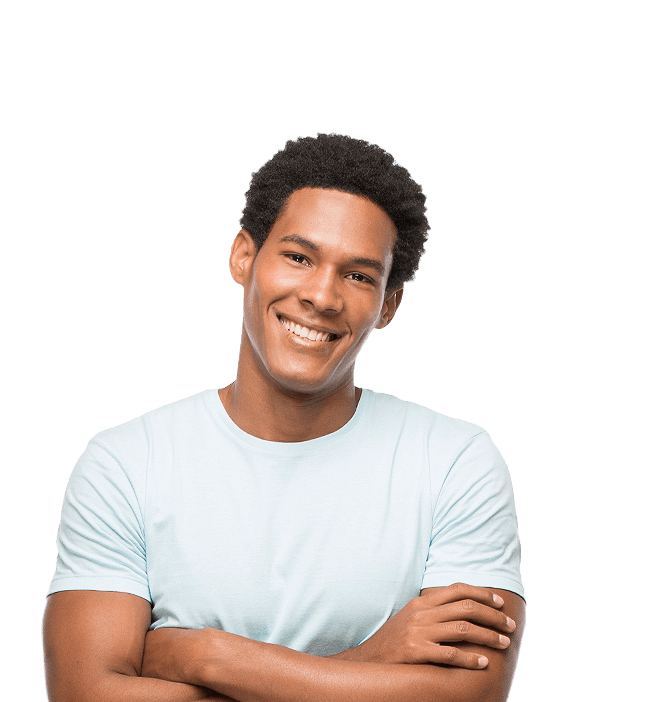Nose Surgery for Men
Why do men consider rhinoplasty?
As the focal point of your face, your nose works together with your other features to create balance. If you’re concerned about the size or shape of your nose, rhinoplasty is a safe and effective way to improve your appearance. Some of our male patients want to establish a more attractive profile, while others seek out rhinoplasty to correct an old injury or reduce obstructed breathing. Bellevue cosmetic surgeon Dr. Alexander Sobel can work with you to find a rhinoplasty approach that addresses your specific concerns so you can feel confident and look your best.
How much does rhinoplasty cost in Seattle?
The cost of a rhinoplasty with Seattle cosmetic surgeon Dr. Sobel will range between $4,500 – $9,700, depending on the extent of the procedure needed to achieve your desired goals. We also have financing options available to help make paying for your procedure easy and more affordable.
- Triple board-certified in general cosmetic surgery, facial cosmetic surgery, and otolaryngology
- 15+ years of experience specializing in cosmetic surgery
- Operates in an on-site accredited surgical suite for patient safety and privacy
- National leader in cosmetic surgery, including as Past President of the American Board of Cosmetic Surgery and the American Academy of Cosmetic Surgery, and as an expert speaker at medical conferences
- Former Seattle Met Top Doctor with hundreds of 5-star patient reviews
Your Rhinoplasty Procedure
Consultation with Dr. Sobel
The first step in the rhinoplasty process is a thorough consultation. Dr. Sobel will work with you to evaluate your existing nose shape and structure, as well as your skin type and personal preferences. Once a treatment plan has been established, Dr. Sobel will answer all of your questions so you feel fully prepared on the day of your surgery.
- Key Benefits
- Glossary
- Improves the angle, shape, and appearance of the nose to balance key facial features.
- Corrects breathing issues caused by injury or structural nasal issues, like a deviated septum.
- Enhances psychological well-being for those who feel self-conscious about their nose’s appearance.
- Alar Cartilage:Cartilage in the nose that forms the tip and lateral walls of the nostrils.
- Cartilage: A flexible connective tissue found in various parts of the body, including noses.
- Cartilage Grafts: Transplanted cartilage used to support or augment nasal structures in rhinoplasty.
- Cartilaginous Dorsum: The cartilage part of the nasal dorsum.
- Closed Rhinoplasty: Rhinoplasty performed with incisions inside the nostrils, that results in no visible scars.
- Complications: Undesired outcomes or problems that may result after a medical procedure or during recovery.
- Cribriform Plate: A thin bone at the roof of the nasal cavity, part of the ethmoid bone.
- Deviated Septum: A condition where the nasal septum is significantly off-center or crooked, often the result of an injury.
- Dorsal Hump: A bump on the nasal bridge often composed of bone and cartilage.
- Functional Rhinoplasty: Rhinoplasty that can result in improved nasal function, such as breathing.
- General Anesthesia: A medically induced coma and loss of protective reflexes used during surgery.
- Lateral Crus: The part of the alar cartilage in the nose that extends laterally.
- Lateral Osteotomy: A surgical procedure to reposition the nasal bones, often used in rhinoplasty.
- Local Anesthesia: A type of anesthesia used to numb a specific area of the body.
- Nasal Bones: The pair of small bones that form the bridge of the nose.
- Nasal Dorsum: The length of the nose, including the bridge and tip.
- Nasal Reconstruction: Surgical restoration of the nose’s shape, often after injury or cancer.
- Nasal Skin: The skin covering the external part of noses.
- Nasal Tip: The lowermost part of noses made of cartilage and skin.
- Nasal Valve: The narrowest part of the nasal airway, crucial for proper airflow.
- Nostrils: The two external openings of the nose.
- Nonsurgical Rhinoplasty: A cosmetic procedure that alters the shape of noses using injectable fillers.
- Nose Job: Informal term for rhinoplasty or nose surgery.
- Open Rhinoplasty: A type of rhinoplasty where incisions are made across the columella to expose the nasal structure.
- Paramedian Forehead Flap: A surgical technique used for nasal reconstruction using skin from the forehead.
- Revision Rhinoplasty: A second rhinoplasty performed to correct or improve results of a previous nose surgery.
- Risks: Potential negative outcomes or side effects associated with a procedure.
- Septal Cartilage: The cartilage part of the nasal septum.
- Septal Deviation: The displacement of the nasal septum from the midline.
- Septoplasty: Surgical procedure to correct a deviated septum.
- Skin-Graft: A piece of skin transplanted to repair a damaged area.
- Soft Tissues: Tissues in the body that include muscles, fat, and skin.
- Turbinate: Long, narrow bones in the nasal cavity that humidify and filter air.
Rhinoplasty Surgery
Rhinoplasty surgeries take place in Dr. Sobel’s private, accredited surgical suite in Bellevue. The surgery is performed under IV sedation, so you can feel comfortable throughout the procedure. Dr. Sobel will create small, inconspicuous incisions inside the nose and then remove or rearrange underlying cartilage and bones. This will enhance your natural anatomy for a more refined look that suits your goals.
Dr. Sobel’s Rhinoplasty Techniques
Rhinoplasties are performed using either an open or closed technique:
Open technique
The open rhinoplasty technique uses an incision at the columella, the tissue that separates the nostrils at the base of the nose. From this external incision, Dr. Sobel reshapes the nose.
Closed technique
The closed rhinoplasty technique (endonasal rhinoplasty) uses incisions made within the nostrils to augment the nose. Using these internal incisions, Dr. Sobel addresses the cosmetic and functional changes you desire.
“I am about two months post op from a rhinoplasty and it was (and continues to be) the best decision I have made for myself. My experience with Dr. Sobel and his staff was great—his knowledge, expertise, and ability to listen to and address my concerns was evident in my consultations. The surgery itself was (still surprisingly, to me) a breeze and recovery was quite honestly a pain free (I didn’t even need to use the pain meds) 2 week break from work. I couldn’t ask for more or be more thrilled with my results. His staff is always warm, welcoming and accommodating.””
Rhinoplasty Recovery
Recovery after rhinoplasty surgery is a gradual process and varies from person to person, but there’s a general timeline that most patients can expect:
- Immediate Post-Op (first 24 hours): After the surgery, you’ll be in a recovery room for a few hours. You may experience some grogginess, nausea, or discomfort due to anesthesia and the surgery itself. It’s crucial to have someone to take you home and stay with you for at least the first night of recovery.
- Week One: Bruising and swelling are most noticeable during the first few days and will peak around day 2 or 3 of recovery. You’ll wear a nasal splint to protect and stabilize your nose for about 5-7 days. Expect some bleeding and stuffiness; it’s important not to blow your nose! You can take pain medication as directed to manage discomfort during recovery. Keep your head elevated when you rest and and avoid strenuous activities to help speed recovery. Most patients take one week off from work or school.
- Week Two: Major swelling and bruising will start to subside, but some swelling may persist, especially on the nose tip. You can gradually return to some normal activities at this point in your recovery, but you should continue to avoid strenuous exercise and direct sun exposure.
- One Month: By one month into recovery, most of the swelling has subsided, but subtle swelling can persist. Dr. Sobel will clear you to resume most normal activities, including exercise. Your nose’s shape is more apparent, but you may see more changes in the final shape as the months go by.
- Three to six months: At this point in your recovery, you’ll see subtle refinements in the nose shape, and the gradual decreases in internal swelling will improve breathing. Numbness in the nasal tip, if present, usually improves during this time.
- One year and beyond: Recovery is complete at this point; most patients see the final results of their rhinoplasty around one-year post-op. At this point, the nose has settled into its new shape, with swelling fully resolved. This is the point where you can truly evaluate the final outcome of the surgery.
Your rhinoplasty results are permanent, and your nose will retain its desired shape throughout your life.
Frequently Asked Questions about Rhinoplasty
To find out more about how rhinoplasty can benefit you, contact us today to schedule your complimentary consultation with Dr. Sobel.
Reviews for Anderson Sobel Cosmetic
![]()
"I came into Dr. Sobel’s office for a rhinoplasty revision consultation. I had ... read more"
![]()
"I am so happy to have found this Dr. He did my surgery and fillers. I’ve never... read more"
![]()
"Dr. Sobel and his staff are all amazing. They took the time to meet and care for... read more"

Medically reviewed by Dr. Alexander Sobel — Updated on Oct 23, 2024



